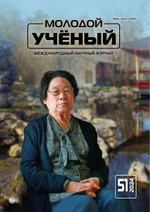This article explores the pioneering contributions of Friedrich Fromhold Martens (F. F. Martens), a prominent Russian jurist and diplomat of the 19 th century, to the evolution of international law. Through his scholarly works, diplomatic engagements, and codification efforts, Martens significantly influenced key principles of humanitarian law, arbitration, and the regulation of armed conflicts. The study examines his legacy in shaping the legal frameworks that continue to underpin contemporary international relations.
Introduction. International law, as a discipline, owes much to the intellectual and practical contributions of individuals who laid its foundational principles. Among them, F. F. Martens stands out as a figure whose work bridged academic scholarship and diplomatic practice. Born in 1845 in Pärnu, then part of the Russian Empire, Martens rose to prominence as a professor of international law and a practitioner involved in critical international disputes. His legacy is notably associated with the “Martens Clause,” a cornerstone of modern humanitarian law, as well as his role in drafting legal texts that govern international conflicts.
Martens’ Scholarly Contributions. Martens authored numerous works that advanced the theoretical foundations of international law. His seminal book, Contemporary International Law of Civilized Nations (1883), provided one of the earliest comprehensive analyses of the legal relations among states. In this work, Martens emphasized the importance of justice and humanity as guiding principles for international law, advocating for a system that transcends mere state interests.
Martens’ academic rigor extended to his editorial work on Recueil des Traités, a monumental 15-volume collection of international treaties. This compilation remains a critical resource for understanding the evolution of treaty law.
The Martens Clause. One of Martens’ most enduring contributions is the inclusion of the “Martens Clause” in the preamble to the 1899 Hague Convention on the Laws and Customs of War on Land. This clause underscores that in cases not covered by existing treaties, civilians and combatants remain under the protection of the principles of humanity and the dictates of public conscience. The clause has since been incorporated into numerous international legal instruments, serving as a moral safeguard against gaps in codified law.
Martens as a Diplomat and Arbitrator. Beyond academia, Martens played a pivotal role in the practical application of international law. He served as Russia’s representative at major diplomatic conferences, including the Hague Peace Conferences of 1899 and 1907. As an arbitrator, Martens successfully mediated disputes, such as the Dogger Bank Incident (1904), where he helped avert escalation between Russia and Great Britain.
Martens’ diplomatic career highlights his belief in arbitration as a peaceful means of resolving international disputes. His efforts contributed to the institutionalization of arbitration mechanisms, which later evolved into the Permanent Court of Arbitration.
Impact on International Humanitarian Law. Martens’ work laid the groundwork for the legal regulation of armed conflicts. His advocacy for the protection of civilians and prisoners of war informed the development of The Hague Conventions and, later, the Geneva Conventions. The principles articulated by Martens remain integral to modern humanitarian law, particularly in contexts where the boundaries of conflict challenge established legal norms.
Historical Context of Martens’ Work. Political Climate: Discuss the geopolitical environment of the late 19 th and early 20 th centuries, including the role of the Russian Empire in shaping international diplomacy.
Emergence of Modern International Law: Analyze how Martens’ work aligned with the broader movement toward institutionalizing international relations through treaties and legal principles.
Detailed Analysis of the Martens Clause. Interpretations: Examine different scholarly and legal interpretations of the Martens Clause over time.
Practical Applications: Explore how the clause has been invoked in key cases, such as those adjudicated by the International Criminal Court (ICC) or during debates on humanitarian interventions.
Comparative Analysis. Peers and Contemporaries: Compare Martens’ contributions with those of other prominent figures of his time, such as John Westlake, Bluntschli, or Henry Dunant.
Legacy in Legal Philosophy: Situate Martens’ work within the broader philosophical debates of his era, such as natural law versus positivism.
Case Studies. Dogger Bank Incident: Provide a detailed case study of how Martens facilitated the resolution of this international dispute, emphasizing his methods and principles.
Hague Conferences: Examine his role and influence during these conferences, particularly his contributions to drafting treaties and shaping the agenda.
Modern Relevance of Martens’ Ideas. Humanitarian Law Today: Discuss how Martens’ principles influence current international law, including discussions on cyber warfare, artificial intelligence in conflict, and non-state actors.
Challenges and Critiques: Analyze potential limitations or criticisms of Martens’ ideas when applied to contemporary global issues.
Multidisciplinary Perspectives. Philosophical Underpinnings: Delve into Martens’ ethical framework, focusing on his belief in the role of justice and humanity in law.
Diplomatic Strategy: Highlight how Martens’ practical diplomatic skills complemented his theoretical contributions.
Visuals and Supplementary Data. Timelines: Create a timeline of Martens’ key works, events, and contributions.
Infographics: Use visuals to explain the Martens Clause or compare it with other legal principles.
Treaty Analysis: Include excerpts from treaties he worked on to provide concrete examples of his contributions.
Conclusion. F. F. Martens’ contributions to international law reflect a rare synthesis of theoretical innovation and practical diplomacy. His legacy endures in the principles of humanitarianism and justice that he championed, principles that continue to guide international legal frameworks in addressing the complexities of global relations. As international law evolves, the foundational work of thinkers like Martens remains a touchstone for legal scholars and practitioners alike.
References:
- Martens, F.F. (1883). Contemporary International Law of Civilized Nations.
- Hague Convention on the Laws and Customs of War on Land (1899).
- Koskenniemi, M. (2001). The Gentle Civilizer of Nations: The Rise and Fall of International Law 1870–1960.
- Tams, C.J. (2010). “The Martens Clause: Its Origin, Meaning, and Future.” Journal of International Law and Policy.







